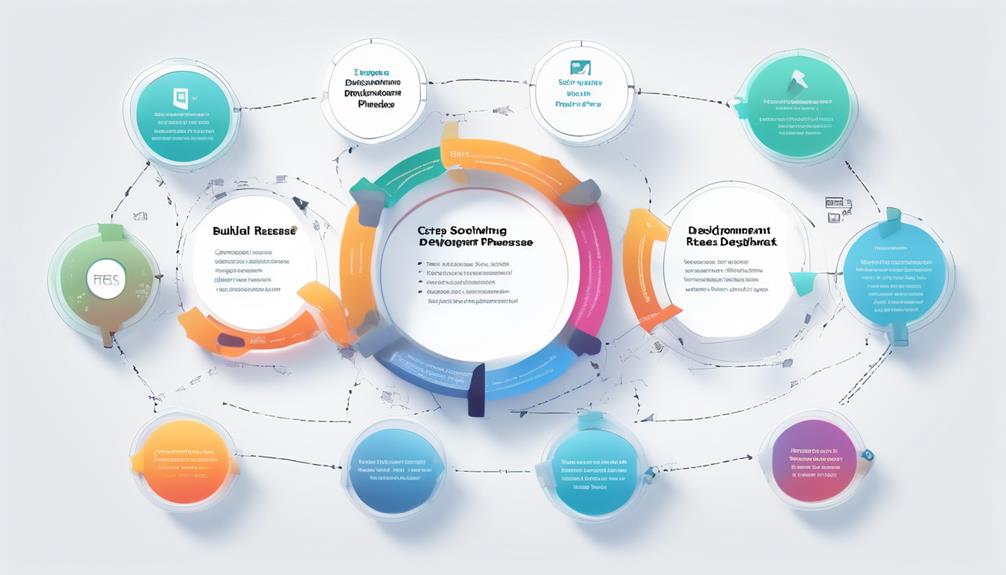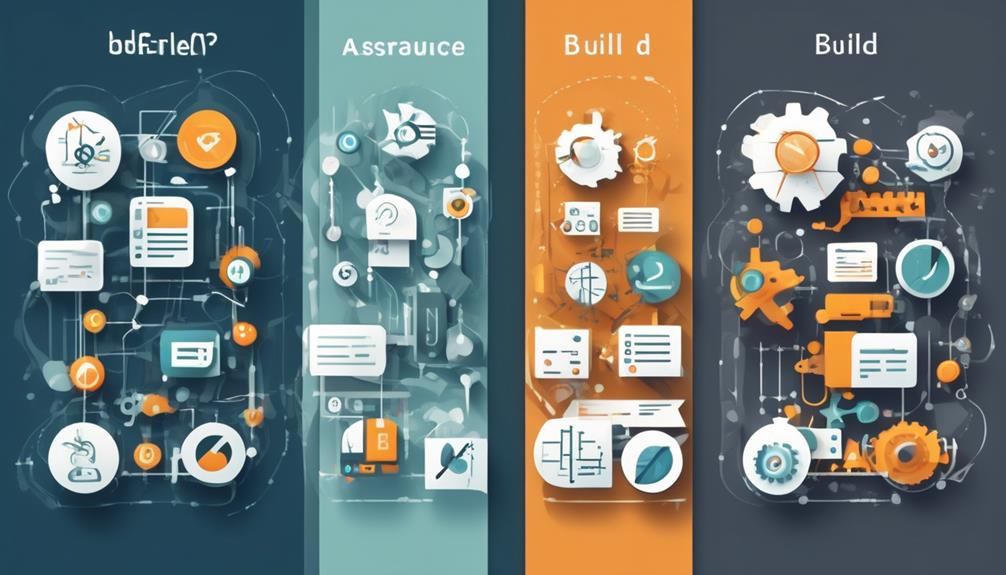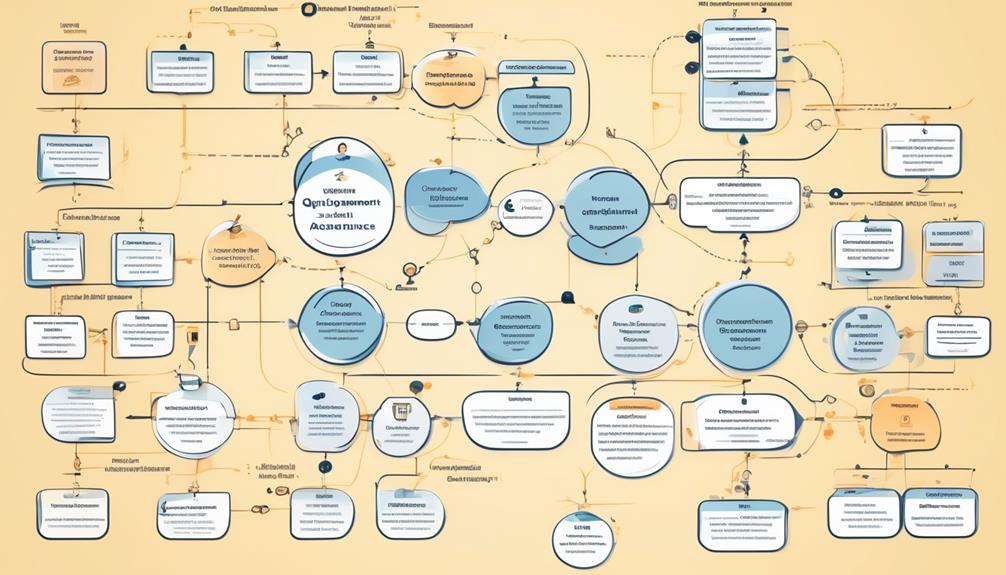Understanding the distinction between building and releasing in the realm of software quality assurance and test automation is akin to decoding the intricacies of a complex algorithm.
As professionals in this field, we are often tasked with ensuring the seamless functionality and reliability of software products. However, the nuances between build and release can be elusive, and it’s essential to grasp their differences to uphold the integrity of our processes.
Join us as we unravel the intricacies of build and release, shedding light on their distinct roles and significance in the realm of software quality assurance and test automation.
Key Takeaways
- Builds represent specific versions of the software provided for testing purposes, while releases are the formal distribution of the product to customers after testing and certification.
- Builds are internal milestones and are for internal testing and development, while releases are intended for external use by customers.
- The test team is responsible for testing and certifying builds, ensuring thorough testing and tracking changes for each build version.
- Releases may consist of multiple certified builds that have undergone rigorous testing and meet the release requirements, culminating in the delivery of reliable and high-quality software to customers.
Definition of Build and Release
When we talk about software development and testing, the definition of ‘build’ and ‘release’ plays a crucial role in understanding the progression of a product from development to customer deployment.
A build represents a specific version of the software that’s provided to the test team by the development team for testing purposes. It’s an internal milestone and is primarily used for testing and development.
On the other hand, a release is the formal distribution of the product to customers after it has been thoroughly tested and certified. It’s intended for external use and signifies that the software is ready for customer deployment.
The test team, which includes Software Testing, Quality Assurance, and testing tools expertise, is responsible for thoroughly testing and certifying a build. Once the build passes all the necessary testing techniques and the established test plan, it’s then released to the customers.
It’s important to note that a release can consist of multiple builds, each representing a version of the software that has gone through the rigorous automated testing and quality assurance procedures before being certified for customer deployment.
Association With Testing

With our expertise in software testing and quality assurance, we closely associate both builds and releases with our thorough testing and certification processes, ensuring the software meets the highest standards before customer deployment. Here’s how we link builds and releases with our testing activities:
- Testing Tools: We utilize specialized testing tools to conduct comprehensive testing of each build to identify and resolve any software bugs or issues.
- Test Cases: Our test team develops and executes a set of test cases specifically designed for each build to ensure its functionality, performance, and reliability.
- Performance Testing: We conduct rigorous performance testing on builds to assess their scalability, stability, and responsiveness under various conditions.
- Version Control: We meticulously manage and document each build version to track changes and ensure that the certified build aligns with the release requirements.
Basis for Distinguishing
To distinguish between the concepts of build and release in software development, we rely on their distinct functions and objectives within the development and deployment process. The basis for distinguishing between build and release lies in their specific roles in the software development lifecycle. The table below summarizes the key differences between build and release:
| Aspect | Build | Release |
|---|---|---|
| Purpose | Provide a version for testing | Distribute the product to customers |
| Intended Use | Internal testing and development | External use by customers |
| Responsibility | Test team is responsible for testing | Formal distribution to customers |
| Composition | Represents a version of the software | May consist of multiple certified builds |
The difference between build and release is rooted in their distinctive functions and objectives. While a build is primarily intended for internal testing and development, a release is the formal distribution of the product to customers. The test team plays a crucial role in certifying a build, ensuring that it meets all requirements before it is released to customers. This distinction forms the basis for understanding the roles of builds and releases in software development and testing.
Occurrence in Development Cycle

In our exploration of the concepts of build and release in software development, we now turn our attention to their respective occurrences in the development cycle. Understanding the timing and context of builds and releases is crucial for a seamless software development process.
- Build Occurrence: Builds occur frequently during the development cycle, often multiple times a day. They’re the result of integrating code changes into the main codebase and are essential for continuous testing and validation.
- Release Occurrence: Releases are less frequent compared to builds. They typically occur when a new version of the software is ready for deployment. Releases undergo rigorous testing and certification by the test team to ensure the software meets quality standards.
- Integration with Testing: Builds are closely integrated with testing activities, providing the test team with the latest version of the software to conduct their tests. Releases, on the other hand, mark the culmination of extensive testing efforts and signify the readiness of the software for deployment.
- Version Management: Builds often involve versioning the software to keep track of changes, while releases mark significant milestones in the version history, signifying a stable and certified version of the software for deployment.
Significance in Software Quality Assurance
Significance in Software Quality Assurance lies in the meticulous testing and certification process that ensures the reliability and functionality of the software before its formal distribution to customers.
The difference between a build and a release is crucial in this context. A build represents a version of the software provided to the test team for internal testing and development. It’s the responsibility of the test team to thoroughly test and certify the build, ensuring that it meets the required quality standards.
On the other hand, a release is the formal distribution of the product to customers after it has been tested and certified. A release can encompass multiple builds, each representing a version of the software that has undergone the necessary testing and certification.
This distinction is significant in software quality assurance as it ensures that the software is thoroughly evaluated and validated before it’s made available to customers, minimizing the risk of potential issues or malfunctions.
The meticulous testing and certification processes within software quality assurance play a vital role in delivering reliable and high-quality software to end users.
Frequently Asked Questions
What Is the Difference Between Build and Release in Testing?
We differentiate between build and release in testing by understanding their distinct roles.
A build refers to the compilation of source code into an executable software application for testing.
A release, on the other hand, involves deploying a tested build to the end-users.
This distinction is crucial in software quality assurance and test automation as it ensures that the tested and verified software is effectively delivered to the end-users.
What Is a Release in Software Testing?
A release in software testing signifies the finalized application, ready for customer delivery. It undergoes rigorous testing and certification by the testing team before being handed over to the customer.
Unlike builds, releases are less frequent and no longer require testing. As a result, the testing team offers the release to customers, signifying that it has met all necessary quality standards for deployment.
What Is a Build in Qa?
In QA, a build refers to the version of the software provided for testing by the development team. It serves as a snapshot of the codebase for internal testing and development.
Our test team is responsible for certifying the build by running tests and ensuring it meets requirements. If the build fails any tests, it can be rejected.
This process is crucial for maintaining the quality and reliability of the software product.
What Is the Difference Between System Testing and Release Testing?
System testing focuses on evaluating the entire system’s functionality and performance. This type of testing encompasses various stages like integration testing and acceptance testing. The goal of system testing is to ensure that the system meets requirements.
Release testing, on the other hand, is specifically geared toward ensuring that the software is ready for production release. It involves final assessments to guarantee the readiness of the software for deployment. This includes checks for compatibility and stability.
Conclusion
In conclusion, the distinction between build and release is crucial in software quality assurance and test automation. Understanding the difference helps ensure that products are thoroughly tested before being distributed to customers.
It’s like a safety net, providing a layer of protection for users. By adhering to this process, we can confidently deliver high-quality software that meets the needs and expectations of our customers.
Rick, our Software Quality Assurance Writer, is the creative force behind many of our insightful articles and course materials. His unique background in software development, fused with his natural flair for writing, allows him to convey complex QA concepts in a way that is both informative and captivating. Rick is committed to keeping abreast of the latest trends and advancements in software testing, ensuring that our content remains not just relevant, but at the forefront of the field. His significant contributions are instrumental in helping us fulfill our mission to deliver premier QA education.










